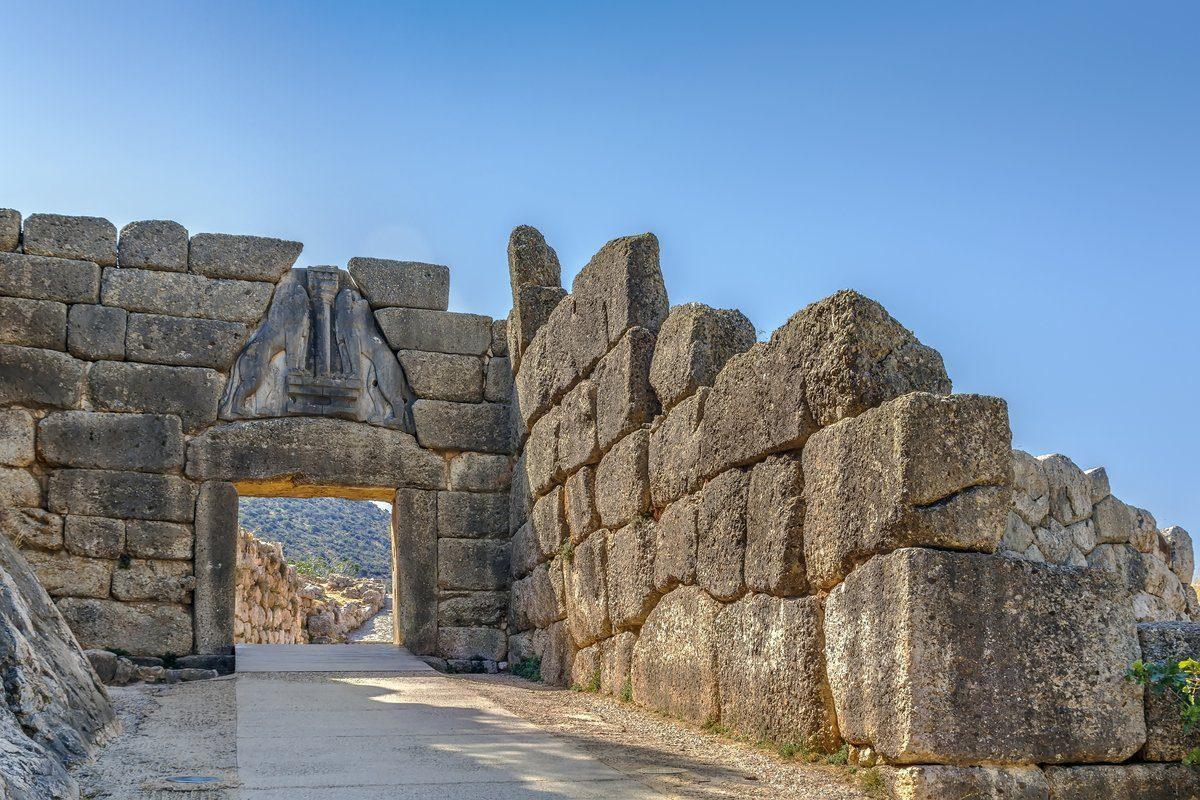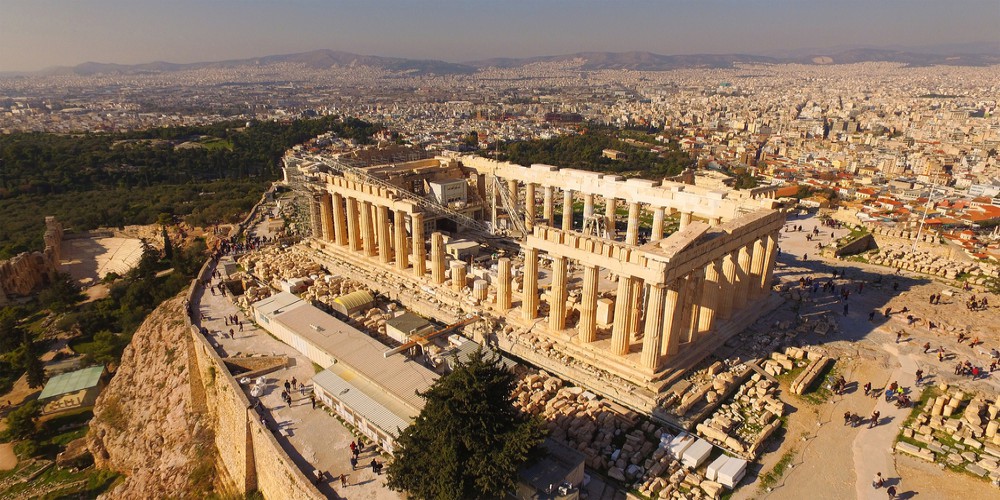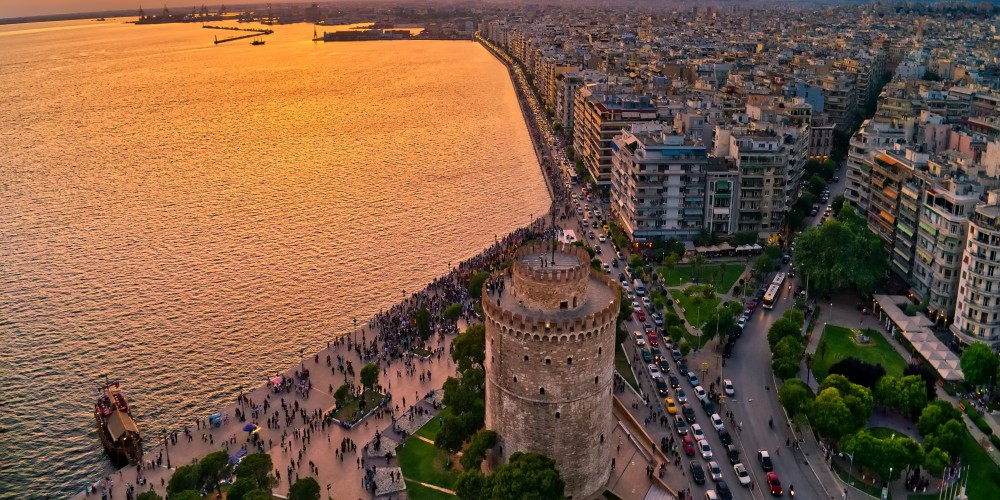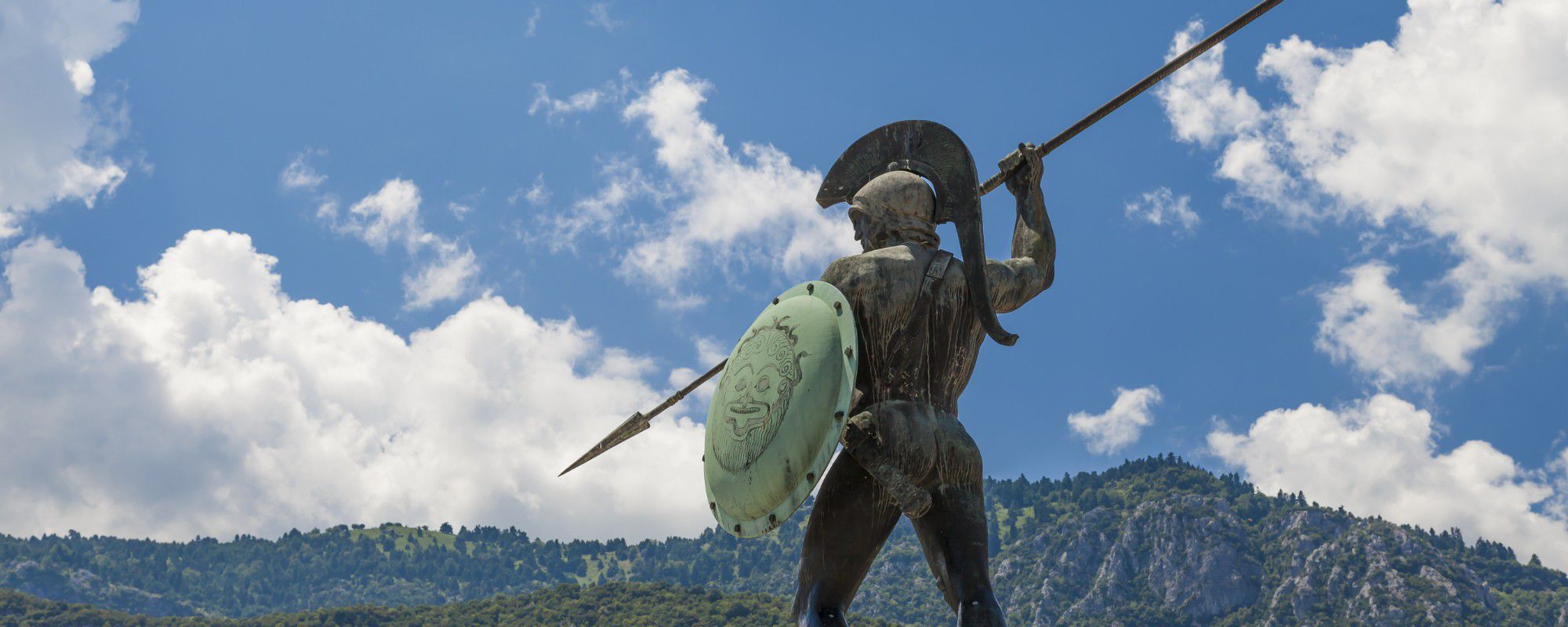
'This is Sparta': The Story of the Ancient City
Key Takeaways:
- Sparta and the Spartan society revolved around the military, with the purpose of producing highly skilled and disciplined soldiers.
- Spartan women enjoyed more rights and freedoms compared to their counterparts in other Greek city-states.
- The city-state played a prominent role in the Persian Wars and the Peloponnesian War, shaping the course of ancient Greek politics and warfare.
- Sparta's militaristic society, warrior culture, social hierarchy, and emphasis on discipline left a lasting imprint on ancient Greek history and continue to intrigue and inspire to this day.
You’ve probably already seen the movie ‘300’ and have a certain image of what Sparta and the Spartan territory were like in Greek antiquity.
You’ve seen the muscly guys that have been raised to be ready for battle at all times and put the interest of their Spartan land before their own.
How close, however, is all that to reality? Here, we will talk about the ancient city of Sparta, the unique Spartan way of life, and unlock an aspect of Greek culture that differs from the norm.
Life in Sparta
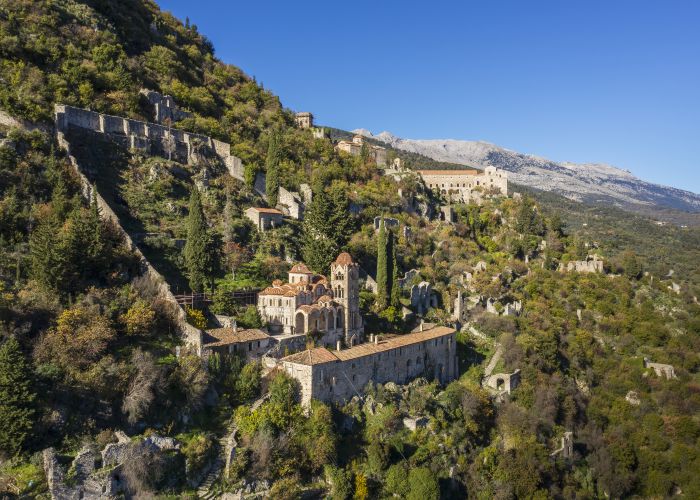
‘With it or on it.’ This phrase is well known to all Greeks, as it hides in it the mentality of a people that went down in history as an example of an honest and simple life.
With this phrase, that means that a soldier should return either with his shield or on it -or in other words, they’re better off dead than a deserter- the Spartan mother said goodbye to her son.
She was reminding him that it was his duty to fight bravely for his homeland, to honor his weapons, and, if necessary, to die for it.
Sparta, in contrast to Athens and other Greek cities in ancient Greece, provoked feelings of admiration in relation to the spirit, virtue, and bravery of its citizens. Lycurgus, the mythical legislator, was the one who defined through laws-clauses the operation and observance of this spirit.
He lived in the 8th century BC. and to him is attributed the creation of the state of Sparta, an ancient world which until then was inhabited by small autonomous war groups.
These laws remained unchanged for five hundred years and, before they were put into operation, Lycurgus received the approval of the Oracle of Delphi.
The greatest virtue of a citizen of Sparta was their willing sacrifice in the duty of defense and salvation of their homeland.
Their rights were proportionate, not in terms of their economic or social position, but in terms of the extent of their self-sacrifice for the common good, for Sparta.
Spartan Women & equality among Spartans
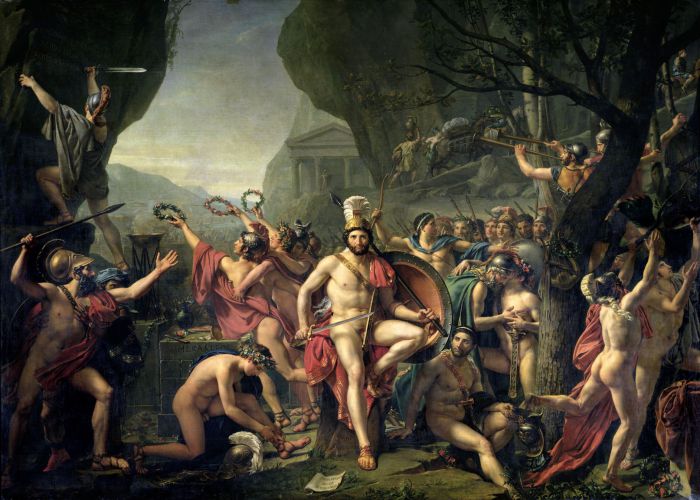
The first innovation we encounter in Sparta is the one that defines a woman's life and her occupations. In other ancient Greek cities, women lived locked in the house, weaving and waiting for the moment of marriage.
Lycurgus, considering the woman's mission to give birth to strong children for Sparta, decided to exercise and live in such a way as to prepare for her future life.
There were herds of girls, nudity was mandatory in certain rituals, and body exercises and competitions were common to both sexes.
The time of marriage was set by law when women and men were in their physical prosperity and their contacts had to be made by controlling their instincts so that they always wanted each other and the fruit of their union was strong.
We can also say that there was a kind of common ownership of men and women since the best could unite with each other with the approval of their husbands, to have children with a wonderful body but also mental gifts.
In order to keep the institution of marriage unchanged, special fines were introduced. These were the fine of celibacy, for those who did not marry, for those who married in old age, and for those who had a bad marriage, among others.
In fact, those who did not marry were deprived of the honor and respect of their younger ones.
The Political State of Sparta
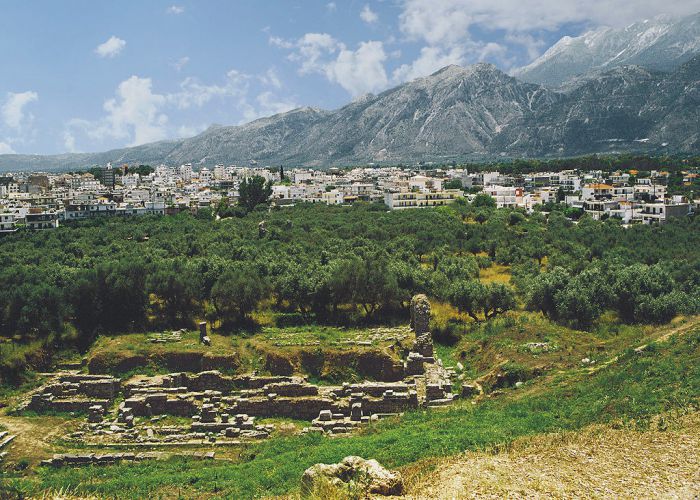
Sparta had a kingdom. But its kingdom was not monarchical. There is no reliable information about the beginnings of the institution, but Herodotus tells a nice story about how the paradoxical regime of the Double Kingdom came about.
In olden times- he explains - the royal family was one and only in Sparta, as everywhere in the early Greek world, and the succession to the highest office was done in the well-known hereditary way.
However, the wife of the late King Aristodemus gave birth to twins and pretended not to know which of her two children was an elder. She wanted them both to ascend the throne.
The Spartans found themselves in a big dilemma and decided to solve the mystery by asking the oracle of Delphi. Pythia -the priestess of the famous oracle- replied that they should consider both children kings, but rather honor the one who was born first.
The Spartans found themselves in question again. The solution was given by a Messinian named Panitis (which means ‘the one who denotes the cunning that penetrates the world’), who suggested that they spy on the mother and see which child takes care of feeding and washing first.
The idea was successful. The Spartans proclaimed both children kings but recognized the primacy of honor to Eurysthenes. Proclus's brother proved to be a very different character, and the two royal families that emerged (the Agiades and the Euripontides) differed significantly in mentality.
According to tradition, the Agiades, the descendants of Eurysthenes, were recognized as superior.
This story may not be a historical fact. But it shows a peculiarity of the Sparta regime that was eventually used for the benefit of the war. From the late 6th century only one of the two kings led as a leader in the expeditionary corps outside the city limits. The other remained in Sparta.
The constant threat of helots may have contributed to this settlement. But the possible dichotomy of the kings in the critical hours of the battle must have been prevented.
In times of war, one king took care of the internal affairs of the city state, and the other was the undisputed leader of the campaign.
There were other peculiarities in the Sparta regime. One of them was the Senate. Twenty-eight prominent citizens, over the age of sixty, were elected to this body to serve the city for life.
Both kings participated in the corps automatically, each with a double vote, so that the total number of men in the Senate reached thirty. In fact, in the absence of a king, it was possible for him to be represented in the Senate by a beloved and trusted person.
The Senate had many responsibilities. Its jurisdiction included the application of the law, the maintenance of order, and, above all, the preparation of the issues that would come for approval in the assembly of the like.
The assembly of the like called the Church -municipality- of Damos, was the main executive body and the basis of the Spartan regime. The small text of the "Lycurgus clause", saved by Plutarch, stated that "the power and power belong to the municipality" of the city.
All free adult male citizens participated in the Church of the Municipality. In its assemblies there was discussion and different views were expressed, but not all the same could speak with the same ease. Controversies were usually limited to members of the upper families. Final decisions (on accepting or rejecting the Senate's proposals) were made by word of mouth.
Great power in Sparta was also held by the five Ephors, lords elected by the Church of the Municipality, with many executive and judicial powers - another peculiarity of the Spartan regime.
Their one-year term was not allowed to be renewed, and this reduced the possible opportunism of their decisions. The institution of registrars, who were the "guardians" of the state, was introduced at a later stage than the other three political institutions (the dual kingdom, the Senate, and the Church of the Municipality, and aimed at maintaining the rule of law in everyday life and control of royal arbitrariness.
Gradually the power of the ephors increased to such an extent that everyone trembled before them, even the kings. Of the commissioners, two always followed the expeditionary corps abroad.
Sparta became a model state for many writers of antiquity. In its peculiar state, with its many control mechanisms and emphasis on the public interest, many saw the true realization of favoritism.
There were no written laws in Sparta. The law of the city was from the beginning and remained customary until the end. With its adherence to tradition and its conservative spirit, Sparta did not experience tyranny or any other state change for several centuries. At least as an ideal, the ethos of life that pervaded the city was maintained relatively stable.
The Spartan Military and Training System

The education of children was the responsibility of the state. As soon as a child was born, their father had to present it to the elders' club for inspection so that they could be accepted as members of the tribe.
The boys lived with their parents until they were seven years old. They then belonged to the state, which was responsible for their education until the age of twenty.
They became a member of two types of groups. The first was called ‘Boes,’ which consisted of boys of the same age. The latter was called ‘Iles’ and was formed by boys of different ages.
The ‘Boes’ covered mainly the spiritual and physical education of the youth, while the ‘Iles’ functioned more as organized groups, preparing for martial arts and discipline.
A virtuous and distinguished person in the city was responsible for the proper education of the children. As his assistants, he had floggers, teenagers whose duty was to punish when it was necessary.
From a very young age, they learned to survive in difficult conditions, wearing the same clothes both in winter and summer, without wearing shoes, and eating a small amount of food.
In relation to the issue of food, children could steal extra food, but without people realizing it because otherwise, the punishment was harsh.
This method was intended to enable them to develop cunning and vigilance, elements that would help them in their path as adult warriors.
In order for the children never to be left without a leader, if the one responsible for the educator of the children was missing for some reason, every citizen had the right to direct the children, to impose on them what he considers good, and to punish them, if they made a mistake.
This was intended for children to always act within the framework of ethics and law.
The law also stipulated that every citizen would be responsible not only for his own children but also for the children of the entire city. In this way, everyone was responsible for their upbringing.
In adolescence, in the phase when arrogance, arrogance, and strong desires for pleasures can very easily develop, the obligations are many. The teenager had to become courageous in overcoming any sense of cowardice and develop respect and shame for his elders.
Crypto was another institution in shaping teenagers into tomorrow's warriors. Its characteristics were the isolation of groups of teenagers, the life in the wild, the hunting that many times had as victims helots, and in general, the survival beyond rules and order.
The crypt has no weapons, lives in the mountains, has a field of action at night, feeds on what he finds, and embodies the warrior who can face any danger.
We could say that crypto was a kind of initiation, a phase of passing from the level of the teenager who has no specific obligations and rights to that of the adult hoplite that is accepted after it has been tested and has proved its value.
Then, at the age of twenty, each Spartan belonged to a group of fifteen people called ‘siskinia’ or ‘sousition’. Until the age of thirty, the members of the tents lived in houses and ate together.
After their thirties, they slept at home at night but spent their day eating with their companions. The amount of food was set so that they would not be deprived of food, nor would they eat more than they needed. The same thing happened with drinking.
Everyone who participated in these joint meals had to participate in the storage of food from the hunt he did. Hounds, horses, and supplies also belonged to the whole group.
Young people under the age of twenty, who had not yet completed their treatment and did not yet have political rights, were often invited to these meals. Their contact with the elders was considered an effective means of completing their political education, thus learning from the experience of the elders. There was also the custom in the meals to mention every good and courageous deed that someone did in the city.
Service in the state lasted until the age of sixty, forty years after their coming of age. During this long period, the good condition of the body that they achieved with exercise was very important.
All kinds of bribery and exclusive occupation of the citizen were forbidden, they were the projects that would ensure the freedom of the city. After all, one did not have to worry about having money since everyone contributed an equal portion of food and all material pleasures were out of the Spartan mentality.
The most powerful and distinguished citizens took care of the lords, boasting that if they were asked for a task, they did not walk but ran to obey because they thought that if they were the first to be completely disciplined, others would follow.
The supervisors, ordinary citizens who were elected to this position for one year, had the responsibility of supervising the observance of the laws, the smooth functioning of the administration, the education of the youth, the behavior of citizens and rulers, and the management of public money.
They even had the power to oust the rulers before the end of their term, to imprison them, and to try them, even imposing the death penalty. Thus we see that there was direct control over those who had as their duty to govern the city so that no one deviated from the laws and the care of the common good.
War was an important factor in the life of the Spartans. After all, their entire education and way of life was a preparation for the moment when they would have to defend their homeland.
The king was the one who led the army starting with sacrifices to Zeus. When the omens were good, a fiery one would take a flame from the altar and go as far as the city limits.
Other sacrifices followed for Greek Mythology gods Zeus and Athena and then they were ready to face the enemy. In front of the king, there was no one except his Scythian guards and scout horsemen.
A common ritual before the start of the battle, was in front of the eyes of the enemies to sacrifice and accompanied by pheasants to be crowned and to polish their weapons, thus showing that they were determined for the battle, cheerful, and presentable.
Their attitude towards death was commensurate with the education and mentality they acquired during their lifetime.
The period of mourning for the dead was short, lasting eleven days. On the twelfth they sacrificed to Dimitra, thus putting an end to mourning. The men were buried wrapped in red cloaks - the color of warriors - without placing any valuables in the tomb, thus showing that their greatest asset was their participation in the Spartan army.
The greatest honor for a man was to die in battle and for a Spartan woman to die in childbirth. Thus they had fulfilled their highest purpose of existence since for a man it was to be a good soldier and for the day-to-day tasks of a woman to be a mother of good Spartan soldiers.
The ethics we encounter in Sparta may seem strange and incomprehensible to us. Many even criticize their way of life and their laws as cruel and unjust.
But Sparta is one of the few historical examples where individualism is lost in the face of the common destiny and course of a people.
War with Persia
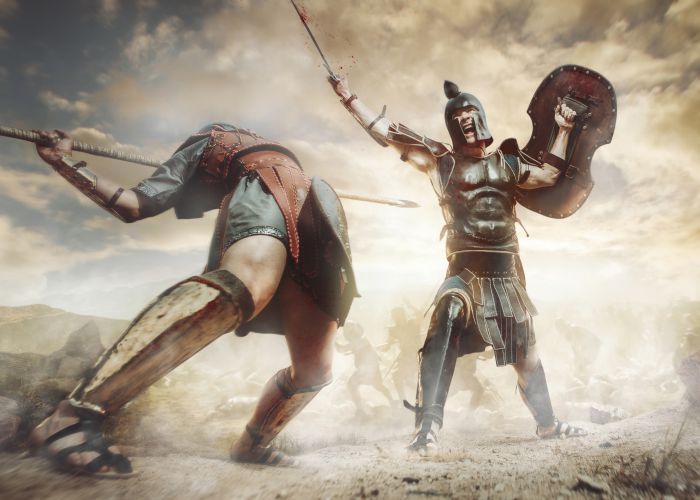
The power of Athens, as it grew, made Sparta and Corinth worry. This caused the Peloponnesian War to begin, in which the Spartans won. The Spartans, however, did not treat the other Greeks well. Many cities then formed an alliance against Sparta. Thus began a new war, which ended with the actions of the Persians.
The Pan-Hellenic Alliance
The Persian Empire was then at the height of its power. The collective defense that the Greeks resisted against the invaders led to a completely unexpected, logical, victory that even allowed them to liberate Greek cities - states located on the outskirts of Persia itself.
The Persian Wars, apart from being a military conflict, were also a conflict between the two greatest civilizations of the time: the Greek and the Persian. Two worlds that were so opposite to each other that if things had turned out differently, the world today would probably be different.
The controversy began in 499 BC. when Greek city-states on the coast of Asia Minor, Ionia, revolted against Persian rule.
In 498, the rebels occupied Sardis, offering another pretext to the Persian king Darius I for his decision, a few years later, to campaign against Greece. Darius' main pretext for his invasion of Greece was the fact that Athens and Eretria had offered help in the revolution of the cities of Asia Minor.
In 494, the Ionian revolutionaries were defeated. Two more years passed, and in 490 the Persian army landed in the plain of Marathon, where it was defeated. This was followed by the victory of Miltiades over the Persians in Plataea.
The Battle of Thermopylae and Leonida’s Famous ‘This is Sparta’
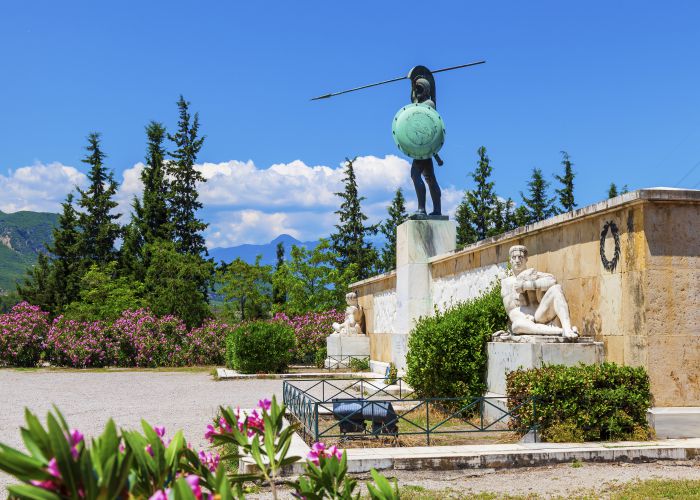
At the end of the year 481 BC, all the Persian preparations for the campaign against Greece were over, and the following year 480 BC, after the spring rains, the huge army marched towards the Hellespont. For seven days and nights, the army was conducted in Europe.
According to Herodotus and some historians who relied on his evidence, the military force with its followers and plunderers numbered 5,283,220 men.
Herodotus reports that the land army consisted of 1,700,000 soldiers, 80,000 cavalry, and 20,000 Libyans and Arabs, with chariots and camels, and that the fleet numbered 1,207 ships. In addition, the Thracian and Macedonian cities of Northern Greece provided more than 300,000 men.
The Persian forces arrived in Thessaly (480 BC), without any resistance. In the meantime, a small force sent by the cities in Greece under the leadership of King Leonidas encamped at Thermopylae.
Athens and Sparta consulted the oracle of Delphi and received frightening answers.
The Athenians, who could not accept the oracle 'go to the ends of the earth,' told the oracle that they would stay there until they died, waiting for a better oracle.
The oracle then gave them a new oracle, which said that 'a wooden wall will survive the destruction of Attica" and "the divine Salamis will destroy the women's children.'
In the council of the Athenians, Themistocles later using arguments said that the wooden walls were their fleet and that if God prophesied evil for Greece, he would never use the word "divine", but the word "disastrous".
To the Spartans the oracle was just as gloomy, telling them that "either Sparta should be lost, or one of its kings." When Xerxes arrived at Thermopylae, he found himself defended by a corps of 300 Spartans and 7,000 hoplites from other cities, under the command of the Spartan king Leonidas.
Xerxes I, learning about the small number of Greek forces and that many Spartans outside the walls were training and combing their hair, in his embarrassment, called Dimaratos to explain the meaning of all this.
Dimaratos told him that the Spartans would defend the place until death and that there was a tradition of washing and combing their hair with special care when they were going to put their lives in danger. Xerxes I, who did not believe in Dimaratos, delayed the attack for four days, thinking that the Greeks would disperse when they realized their great powers.
He also sent messengers, asking them to surrender their weapons. Leonidas's answer was ‘Molon lave’ (come and get them). When he told a Spartan about the large number of Persian forces, which with their arrows would hide the sun, he replied ‘Even better, we will fight in the shadows.’
On the fifth day, Xerxes I attacked without any success and with great losses, although the Medes fought bravely. He then ordered his personal guard, the 'Immortals' under the command of Jordan, a body of ten thousand men of the best Persian soldiers, to attack, but they also failed and it was observed that Xerxes I jumped from his throne three times , from anger and agony.
The next day they attacked again, but there was no progress. Xerxes I was desperate, but his fate changed when Efialtis -meaning 'nightmare'-, son of Eurydimus of Malida, told him about a hidden path through the mountain.
Immediately the powerful Persian force of the Immortals was sent, with their leader Hydarnis, led by the traitor. Early in the morning, they reached the summit, where the Phocians had encamped, and as soon as they saw the Persian army they fled.
When Leonidas learned of the events, he ordered that the war council be convened. Many thought that they should retreat and find a better location to defend themselves, but Leonidas, who was bound by the laws of Sparta and the oracle he had prophesied, that either Sparta or a king of Sparta would have to be sacrificed, refused.
Three hundred Spartans and seven hundred Thespians decided to stay and fight. The rest were allowed to leave, with the exception of four hundred Boeotians who were held hostage.
Leonidas did not wait for the Persian attack, which was delayed by Xerxes I and he marched against them. In the ensuing battle, thousands of Persians were killed and the rest retreated to the sea, but when the Spartan spears broke, the Spartans began to suffer losses and one of the first to fall was Leonidas.
One of the toughest battles around his body took place. Four times the Persians attacked to take it and four times they were repulsed.
In the end, the Spartans, exhausted and wounded, carrying Leonidas's body, retreated behind the wall but were surrounded by the enemy, who killed them with arrows.
At this point, a marble lion was placed by the Greeks in honor of Leonidas and his men, as well as two other monuments near him. In one of them, the following words are written:
'Oh, let the Lacedaemonians announce that we are here, those who are convinced.'
Sparta today

The modern city of Sparta is built in a green valley, between the mountain ranges of Parnon and Taygetos, near the right bank of the river Evrotas.
It has large squares, wide and tree-lined streets, and unique neoclassical buildings. You will be impressed by the central square, dominated by the City Hall of Sparta, an imposing neoclassical building of 1909.
Around the square are many cafes, ouzo bars, bars, and shops. You will also catch the eye of the building of the Archaeological Museum and the neoclassical one that houses the Koumandareio Gallery. Konstantinos Paleologos Avenue, with palm trees, is the most characteristic street of the city.
Along its side are some of the most beautiful neoclassical houses in Sparta. The statue of Leonidas - the most photographed attraction of the city - stands imposing in front of the municipal stadium, and behind is the citadel of ancient Sparta.
Ancient Sparta, the homeland of Leonidas, who sacrificed at Thermopylae with his 300 brave men, is not far from the modern city's center. Remains from the temple of Athena of Chalkio, the so-called circular building, as well as the Roman theater, are preserved from the ancient acropolis.
A short distance from the city center is the sanctuary of Orthia Artemis, which was a place of religious ceremonies and initiation of the teenagers of Sparta in the athletic and military training code of the city.
On the outskirts of the citadel of ancient Sparta, north of the modern city, are preserved the ruins of a peculiar temple-shaped building of Leonidas (5th century BC). The local tradition, as well as the traveler Pausanias, state that Leonidas's bones were transported and buried there from Thermopylae.
At the top of the hill of Prophet Elias (5 km southeast of the city) are the ruins of Menelaus, an important temple hero of the Spartans, where the worship of Menelaus, the mythical king of Sparta, and his wife, Helen.
The Museum of Olive and Greek Oil, housed in the old stone building of the Electric Company, will take you on a journey through the culture, history, and technology of olives and olive production in Greece, from prehistoric times to the early 20th century.
The Archaeological Museum of Sparta was founded in 1875 and is housed in a neoclassical building built to the designs of the architect G. Katsaros. It hosts findings from the Neolithic to the late Roman era from the archaeological sites of the area. An important position is occupied by the bust of the Spartan warrior, the so-called Leonidas.
Final Thoughts
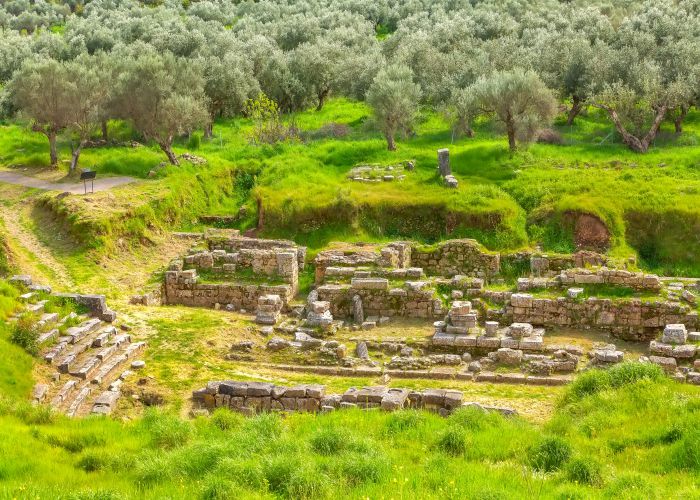
Sparta is a place of special beauty and unique history, which surprises the visitor with the alternation of its landscapes, the wonderful nature, and its important monuments and sights.
Here, you will travel in the historical footsteps of the legendary King Leonidas and Constantine Paleologos, you will see castles and palaces that will take you to another era, you will explore the mountains of Taygetos and Parnon, you will be introduced to the secrets of Greek nature and you will discover charming villages that retain their traditional color.





